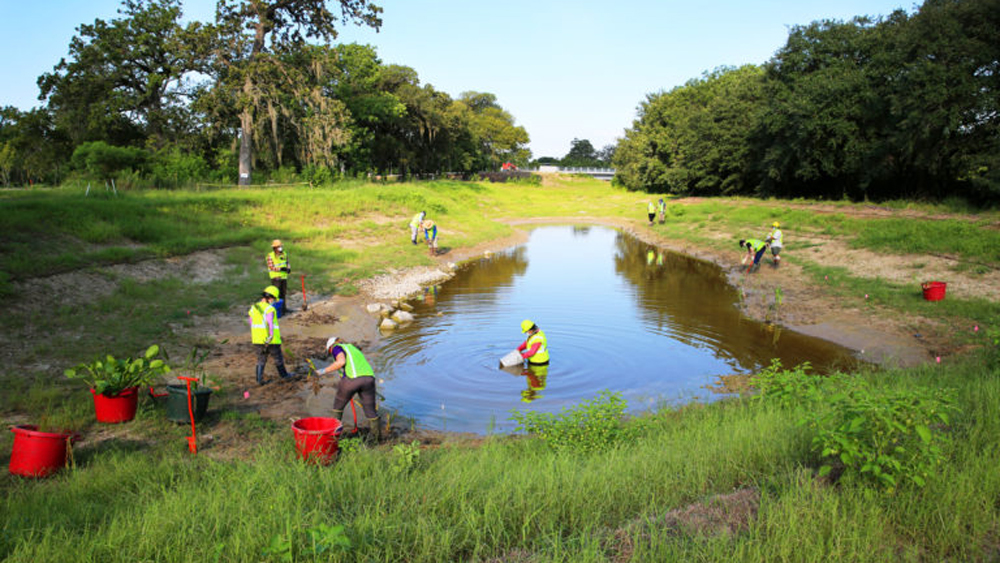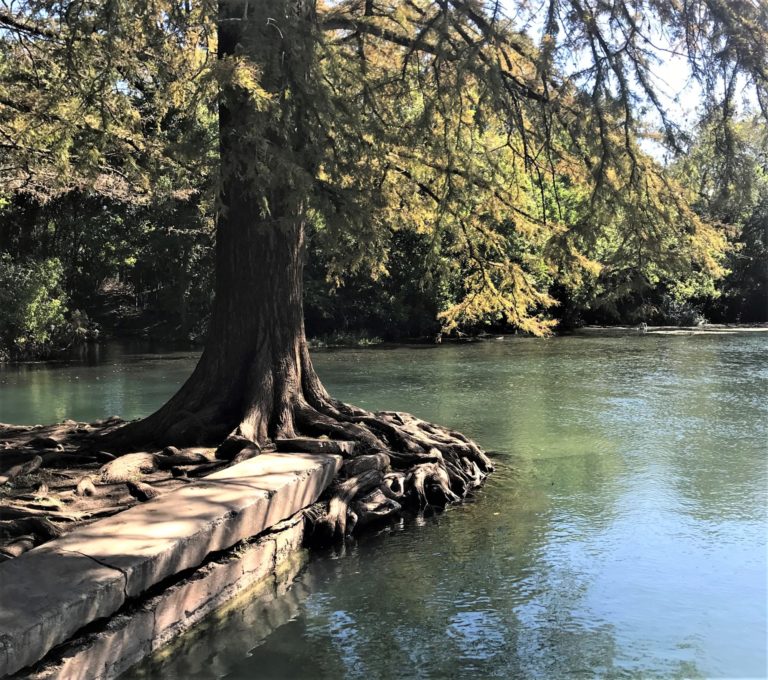
A newly published article in One Earth hopes to stir discussion around adoption of construction designs and methods that utilize nature to cut costs, extend project lifecycles and improve ecological synergy, according to a Texas A&M AgriLife research scientist.
The lead author is Dr. Rusty Feagin, AgriLife research professor and ecologist in the Department of Ecology and Conservation Biology in the College of Agricultural and Life Sciences, and the Department of Ocean Engineering in the College of Engineering, both at Texas A&M University. In addition to Feagin, 23 U.S. and European professionals in various fields including engineering, public policy, construction and biology contributed to the publication.
Feagin said the paper “Infrastructure investment must incorporate Nature’s lessons in a rapidly changing world” aims to initiate conversations about sustainable infrastructure and the need for incorporating natural elements into projects.
Publication of the commentary piece is timely as U.S. Congressional members continue to haggle over pieces of a proposed infrastructure bill Feagin said. Natural elements go by many names, including “nature-based solutions,” “nature-based features” or “natural infrastructure.” But regardless of the names used, everyone involved in national infrastructure construction needs to shift their mindset toward these ideas, he added.
Incorporating nature-based features, Feagin said, can reduce project costs and make infrastructure more resilient in dynamic natural settings, helping the structures last longer than traditional constructions.
“People tend to think of roads and bridges when we say ‘infrastructure,’ but infrastructure is really anything that represents the foundation we build society on, including our waterways, coastlines and ports,” he said. “Transitioning from concrete and steel to natural elements is not ideal for every project, but we need to begin looking at ways to implement these methods, especially where natural change is dynamic and projects need to be more flexible within the changing environment.”
Opportunity ahead for natural infrastructure
Natural infrastructure is especially applicable in areas where climate change is impacting weather variability, such as coastlines where storm surges can occur and riverbanks where heavy rains can cause flooding.
For example, rather than managing floodwaters with walls of concrete and steel, which can degrade over time, incorporating natural infrastructure might mean utilizing natural levees and landscape features to steer water via ecosystems like wetlands and retaining ponds. Natural infrastructure implemented correctly improves with time as well, Feagin said.
He said the U.S. Army Corps of Engineers and the Texas Department of Transportation are already incorporating natural elements within projects. European countries such as the Netherlands are also adopting an increasing number of natural methodologies in construction.

For a specific example, Feagin said the enormous proposed $26 billion infrastructure project in the Houston-Galveston area, nicknamed the “Ike Dike” and designed to reduce the impact of the flood events due to hurricanes and torrential rains, is an example of a project that could benefit from natural infrastructure elements.
“The goal for any project would be to take advantage of natural processes, such as water movement to deposit sediment, or the spread of trees and native vegetation to help capture that sediment and build natural levees, sand dunes and water detention basins,” he said. “By working with nature, you can minimize effort and cost and realize maximum efficiency in the overall system.”
Challenges to adopting natural infrastructure
A shortage of existing expertise and time needed to train the next generation of engineers are constraints to natural infrastructure application in building projects, Feagin said. Traditional engineering follows established technical planning criteria, whereas natural infrastructure requires technical expertise from professionals outside the field, such as ecologists.
This disconnect in expertise is being bridged by project managers and planners who view natural infrastructure as a way to save money and extend a project’s life. But Feagin said building those collaborations takes time and effort.
“Natural infrastructure is being used, but it’s happening because project managers and collaborators see the cost savings or they see an opportunity to add value to the project,” he said. “It could be something as simple as making a space that delivers the infrastructure benefit for the project but also makes it good for activities like bird watching or hunting.”
Another constraint is bureaucracy that regulates and approves project plans, Feagin said. Construction codes and requirements are attuned to traditional construction methods and adding natural infrastructure can lengthen approval processes.
But Feagin said the constraints create an exciting opportunity to train the next generation of engineers and construction professionals.
“The transition will require cross-training and educating people about these new methods and concepts,” he said. “That takes generational change. It would help if policy makers were emphasizing the benefits of natural infrastructure and providing incentives that spur on change.”
Incentivizing adoption of natural infrastructure
Feagin said there is an opportunity to ride the wave of increased public interest in reducing the carbon footprint of projects during and after construction.
The broad acceptance of the burgeoning construction concepts can be accelerated by incentivizing their use through an executive order in a way that would expedite implementation in publicly funded projects, Feagin said.
Offering a discounted or incentivized rate would mean project planning would take a longer-term view of infrastructure projects, Feagin said, and that taxpayers would get more value from their investment. The U.S. Army Corps of Engineers already operates at the lower rate, which is why they are one of the leading users of natural infrastructure in projects.
“That would be an easy lever to pull, and decision-makers would start selecting projects that provide longer-term lifecycles,” he said. “It’s a small incentive to change, but it could pay huge dividends when it comes to adopting these concepts and speeding up the transition toward increased use of natural infrastructure within future construction.”